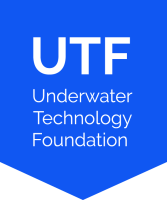12 June - AGENDA DAY 1
08:00 - 09:00
Coffee & Networking in the EXPO
Program Comittee Chair UTC 2024
Processing Product & Technology Manager
09:10 - 09:30
Ensuring affordable and reliable energy through subsea technology
Chief Executive Officer
09:30 - 09:50
Senior Vice President
09:50 - 10:10
Energy Transition Outlook
Executive Vice President for Energy Systems, Northern Europe
10:10 - 10:40
Coffee & Networking in the EXPO
10:40 - 11:20
Panel Debate - Young voices
Moderated by
Tine Louise Trøen – EVINY

Panelists
Pauline Øien – VINDAI
Pedro Nunes – AKERBP
Hanne Rygg – SIEMENS ENERGY
Christina Koukoura – ØRSTED
Håkon Hasli – MICROSOFT
11:20 - 12:50
Lunch & Networking in the EXPO
13:30 - 13:50
Coffee & Networking in the EXPO
13:50 - 15:20
Parallel Session 1
TRACK A
DOVRE
SUBSEA PROCESSING
Jan-Olav Hallset
Ormen Lange Phase 3 – Innovation Enables Subsea Gas Compression
TRACK B
KLOKKEKLANG
DIGITAL FIELD DEVELOPMENT
Mostafa Valavi
Harnessing The Power of AI to Revolutionize Engineering Simulations
TRACK C
SMÅTROLL
SUBSEA FIELD DEVELOPMENT
Håvard Thuen Jensen
Solving life of field challenges for subsea control systems
TRACK A
Asbjørn Aarvik
Åsgard Subsea Compression process design: Project challenges vs. operating experiences
TRACK B
Hildegunn Brudeli
Experiences from Software Development for an All-Electric Subsea Tree
TRACK A
Jostein Kolbu
Advancing Subsea Produced Water Management: Strategies, Technologies, and Environmental Benefits
TRACK B
Stuart Holley
Maximising offshore project value through Digital Collaboration from early in the project lifecycle
TRACK C
Revitalization of Marlim Sul and Marlim leste – Subsea challenges of a large-scale offshore project
15:20 - 15:50
Coffee & Networking in the EXPO
15:50 - 17:20
Parallel Session 2
TRACK A
DOVRE
SUBSEA CARBON TRANSPORT & STORAGE
Michael Smith
Subsea CO2 Transport Infrastructure Integrity Monitoring
TRACK B
KLOKKEKLANG
SUBSEA REMOTE OPERATIONS
Kristoffer Johansen
Technology Is Easy, Operationalization Is Hard – First Year Of Commercial Operations With The Autonomous Inspection Drone
TRACK C
SMÅTROLL
OFFSHORE RENEWABLE ENERGY
Leif Arne Tønnessen
Utility-Scale Wave Power for integration with Offshore Wind Power
TRACK A
Bente Leinum
CO2SafePipe JIP – A collaborative Effort for Reliable CO2 Pipeline Design and Operation
TRACK B
Alan Anderson
Advanced Resident Subsea Robotics: Transforming Operational Efficiency with Next Generation Capabilities
TRACK C
Arill S. Hagland
Subsea Power Hubs – Decarbonise offshore facilities by leveraging subsea field proven experience
TRACK A
Mia Madrid Sørensen
John Mossop
Accelerating Subsea CO2 Injection – A Lean, All Electric Approach
TRACK B
Francesco Cavallini
From vision to offshore operations: the journey of Hydrone-R and Flatfish
TRACK C
Kristen A. Foshaug
Subsea Power Conversion – Unlocking new opportunities through HV DC Subsea Power Systems



























